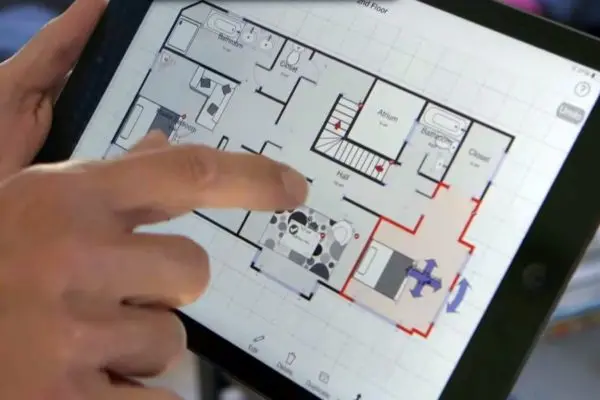How the app for learn to read at home works
Anúncios
Discover how apps to learn to read at home works and why they’re the perfect tool for your child’s education.
[related]Get to Know the Apps to Learn to Read at Home
Learning to read is one of the most essential skills a child can acquire.
Apps designed to teach reading at home have revolutionized the way children learn.
They provide an interactive, engaging, and structured approach to literacy development.
Using these apps, children can practice reading basics, build their vocabulary, and improve comprehension skills.
These apps are not only fun, but also highly effective in creating a solid foundation for lifelong learning.
From phonics-based lessons to story-driven exercises, these apps cater to various learning styles.
Many of them offer features like progress tracking, voice recognition, and rewards to keep children motivated.
Parents can use these tools to supplement traditional education or as a primary teaching method for early literacy.
What Are They For?
The primary purpose of these apps is to teach children how to read.
They break down the reading process into manageable steps, such as recognizing letters, sounds, and words.
Through interactive lessons, children learn phonics, vocabulary, and sentence construction.
These apps also introduce basic comprehension skills by encouraging children to read stories and answer related questions.
They serve as an excellent resource for building reading confidence in a low-pressure environment.
Additionally, they help parents actively participate in their child’s education by providing structured learning materials.
By making reading accessible and enjoyable, these apps foster a love for books and learning.
Are They Reliable?
Yes, these apps are highly reliable tools for teaching children to read.
Most are developed in collaboration with educators and child development experts.
They are based on research-backed methods, such as phonics, which are proven to enhance literacy skills.
Many apps offer progress tracking, allowing parents to monitor their child’s development.
This feature ensures that the learning experience is tailored to the child’s individual pace and needs.
Furthermore, apps are regularly updated to incorporate the latest educational standards.
Their reliability is further enhanced by features like voice recognition, which provides immediate feedback on pronunciation.
Parents can trust these apps as a valuable supplement to traditional teaching methods.
Are They Free?
Many of these apps operate on a freemium model.
This means they offer basic features for free, with optional paid upgrades for more advanced content.
The free versions often include enough lessons and activities to start teaching children the fundamentals of reading.
Parents can decide later if they want to purchase premium features based on their child’s progress.
Some apps offer trial periods, allowing users to explore premium content before committing to a subscription.
Free versions are an excellent way to test an app’s effectiveness without financial risk.
Paid versions often unlock additional lessons, games, and progress tracking tools for a more comprehensive experience.
How to Use These Apps to Learn to Read at Home
Using these apps is simple and accessible, even for parents who are new to technology.
The first step is downloading an app that suits your child’s age and reading level.
After installation, most apps guide users through an easy setup process.
This setup often involves creating a profile to personalize the learning experience.
Parents can choose specific goals, such as focusing on phonics or vocabulary development.
Once set up, children can begin with introductory lessons to familiarize themselves with the app’s interface.
Regular practice is key—experts recommend spending 15-20 minutes a day on the app.
Many apps include progress tracking features, which allow parents to monitor their child’s achievements.
This data can help identify areas where additional practice is needed.
With consistent use, these apps can significantly boost a child’s reading skills in just a few weeks.
Features and Resources of the Apps to Learn to Read at Home
Learn-to-read apps are equipped with a variety of features designed to make learning effective and enjoyable.
From interactive lessons to gamified exercises, these tools keep children engaged while teaching essential literacy skills.
Interactive Games
Interactive games are a core component of most learn-to-read apps.
They make learning fun by transforming phonics and vocabulary lessons into engaging challenges.
Children can earn rewards, such as points or badges, for completing activities successfully.
These games reinforce concepts through repetition, helping children retain what they’ve learned.
Phonics-Based Lessons
Phonics-based lessons are one of the most effective methods for teaching children to read.
They teach the relationship between letters and their sounds, enabling children to decode words.
Apps present these lessons in a step-by-step manner, ensuring that children build a strong foundation.
Audio cues and visual aids often accompany these lessons to enhance understanding.
Story Collections
Many apps include a library of stories designed to improve comprehension and vocabulary.
These stories are often tailored to the child’s reading level, growing in complexity as skills improve.
Reading stories also allows children to apply the skills they’ve learned in a meaningful context.
Interactive questions at the end of each story encourage critical thinking and comprehension.
Progress Tracking
Progress tracking is an essential feature for parents who want to monitor their child’s development.
These tools provide detailed reports on completed lessons, scores, and areas for improvement.
Parents can use this information to adjust their approach or focus on specific skills.
Progress tracking also gives children a sense of achievement, motivating them to continue learning.
Importance of Kids Learning to Read at Home
Learning to read at home is a cornerstone of a child’s educational and personal development.
It creates a foundation for academic success and nurtures a lifelong love for learning.
When children learn to read at home, they benefit from a comfortable and supportive environment.
This familiarity helps them focus on building their skills without the pressures of a classroom setting.
Reading at home also allows parents to play an active role in their child’s education.
Parents can tailor lessons to their child’s specific needs, ensuring a personalized learning experience.
Early literacy skills developed at home enhance a child’s vocabulary, comprehension, and critical thinking.
These skills are essential for excelling in school and understanding the world around them.
Additionally, reading at home helps children develop independence and confidence.
They learn at their own pace, which fosters a sense of accomplishment and motivation to improve.
Incorporating reading into a daily routine strengthens family bonds.
Parents and children can share quality time exploring books together, creating lasting memories.
With the help of learn-to-read apps, home-based education becomes even more effective.
These tools provide structured lessons, interactive games, and progress tracking, making reading enjoyable and accessible.
Encouraging kids to learn to read at home lays the groundwork for future academic and personal success.
It instills in them the value of curiosity, discipline, and a love for stories that will benefit them throughout their lives.
Who Should Use These Apps?
Learn-to-read apps are beneficial for a wide range of users, making them an excellent tool for various scenarios.
1. Parents
Parents who want to actively support their child’s literacy journey will find these apps invaluable.
They offer structured lessons that make it easier for parents to teach reading at home.
With tools like progress tracking and interactive games, parents can monitor and encourage their child’s development effectively.
2. Teachers
Teachers can use these apps as a supplemental resource in the classroom.
They provide additional practice for students struggling with reading or help reinforce lessons taught during class.
The apps’ interactive features keep students engaged and motivated to learn.
3. Young Learners
Children aged 3-8 benefit the most from learn-to-read apps.
These tools introduce basic literacy concepts in an engaging and fun way tailored to their age group.
By making learning enjoyable, these apps help build a strong foundation for lifelong reading skills.
4. Children with Learning Challenges
Learn-to-read apps are designed to accommodate various learning styles, making them suitable for children with special needs.
The visual and auditory elements, combined with customizable lessons, help these children progress at their own pace.
This personalized approach ensures that all learners can succeed in their literacy journey.
Is It Worth Downloading a Learn-to-Read App?
Absolutely, downloading a learn-to-read app is worth it for parents and children alike.
These apps offer an engaging, flexible, and cost-effective way to develop literacy skills.
They are particularly valuable for families with busy schedules, as they allow children to learn at their own pace.
Why Are They Useful?
First, they simplify the learning process by breaking lessons into manageable steps.
Second, they make reading enjoyable through interactive games and stories.
Finally, they provide parents with tools to track and support their child’s progress.
Learn-to-read apps are transforming the way children acquire literacy skills.
With features like phonics lessons, progress tracking, and gamified learning, they provide an engaging and effective educational experience.
These apps are an excellent choice for parents, teachers, and young learners who want to make reading accessible and enjoyable.
By incorporating these tools into your child’s education, you’re investing in a brighter future for them.




